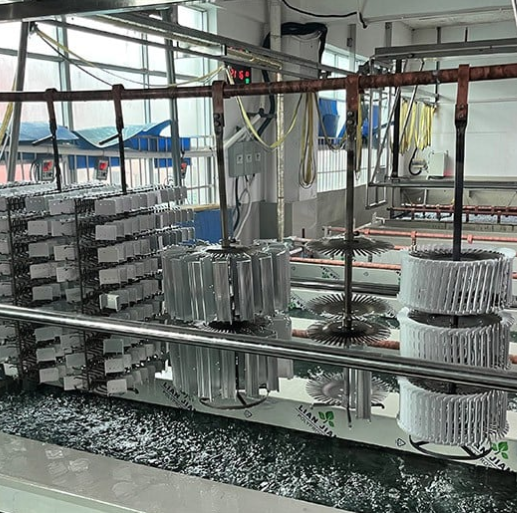Anodizing is a surface finishing technique that involves an electrochemical process to create an oxide layer on the surface of a metal, usually aluminum.
The hardness of the layer can be adjusted by setting up different parameters. For example, it can be concentration of the electrolyte solution, the voltage applied, and the duration of the treatment.
There are three main types of anodizing:
In this process the chromic acid is utilized to get a thin and non-conductive layer of oxide on the surface of the aluminum.
In this method we use sulfuric acid to produce a thicker layer of oxide on the surface of the aluminum.
This is a process that uses a more concentrated sulfuric acid solution and a lower temperature to produce a thicker and more durable oxide layer on an aluminum surface.

Anodizing is a versatile and beneficial process that can improve the performance and appearance of metal surfaces for a wide range of applications. Some of the advantages of anodizing include the following:
Anodizing creates a protective oxide layer on the metal surface, making it more corrosion-resistant.
Anodizing also increases the hardness and wear resistance of the metal surface, making it more durable and long-lasting.
Anodizing can provide a range of colors and finishes to the metal surface, improving its appearance and making it more visually appealing.
Anodizing is a relatively eco-friendly process, as it does not involve using toxic chemicals or producing harmful byproducts.
Anodizing is a cost-effective way to improve the performance and appearance of metal surfaces, as it is a relatively simple and efficient process.
Anodized surfaces are compatible with various other materials, making them suitable for various applications.
Anodizing is a popular industrial process for improving the surface properties of aluminum and other metals. However, it also has some limitations, including:
Anodizing is a versatile surface finishing technique that can enhance the properties and appearance of a material's surface with a bit of limitation. Our experts are available to discuss and guide about surface fishing and products needed to do it professionally. Contact us to order what you need.
By continuing to use the site you agree to our privacy policy Terms and Conditions.